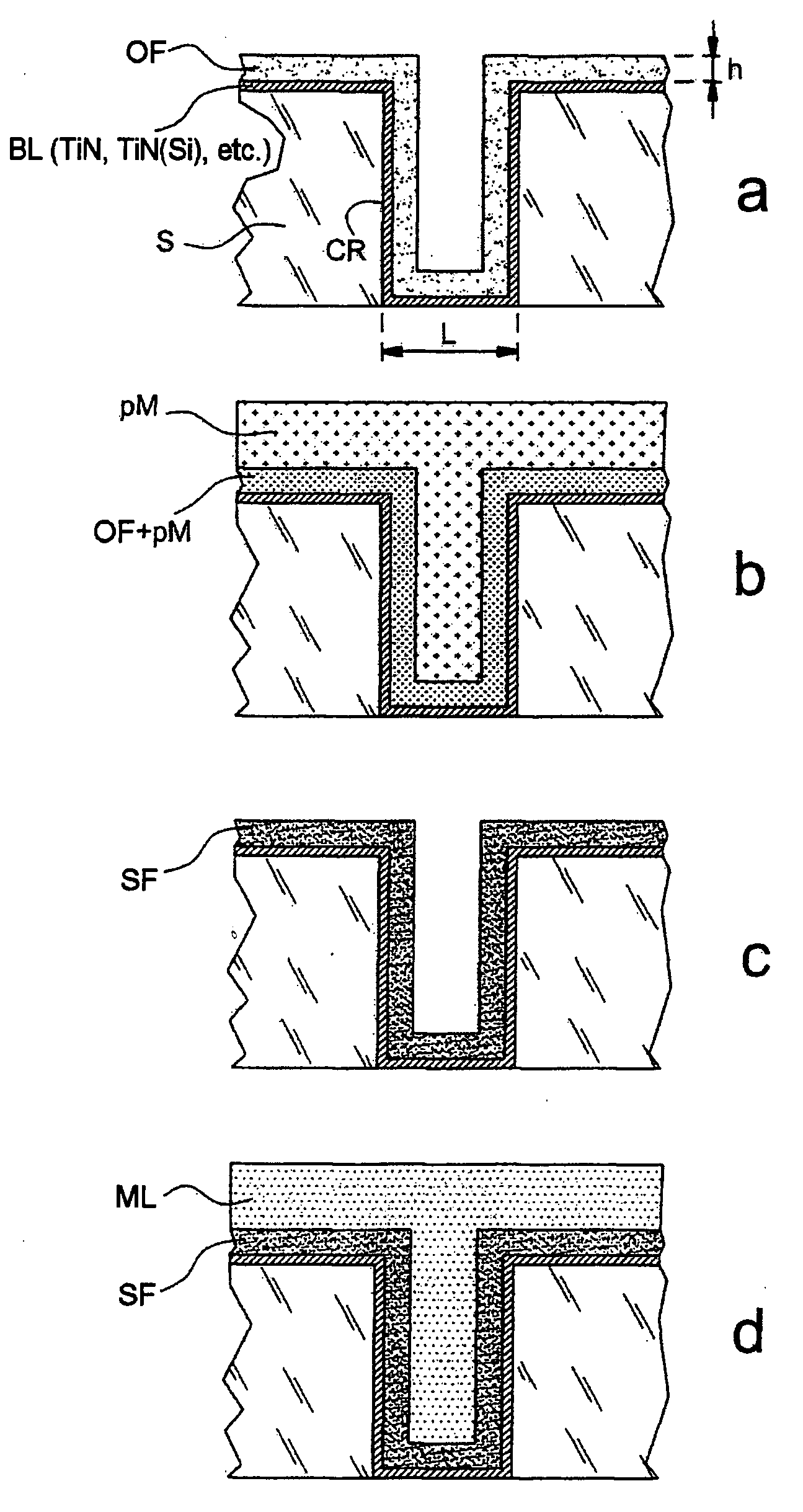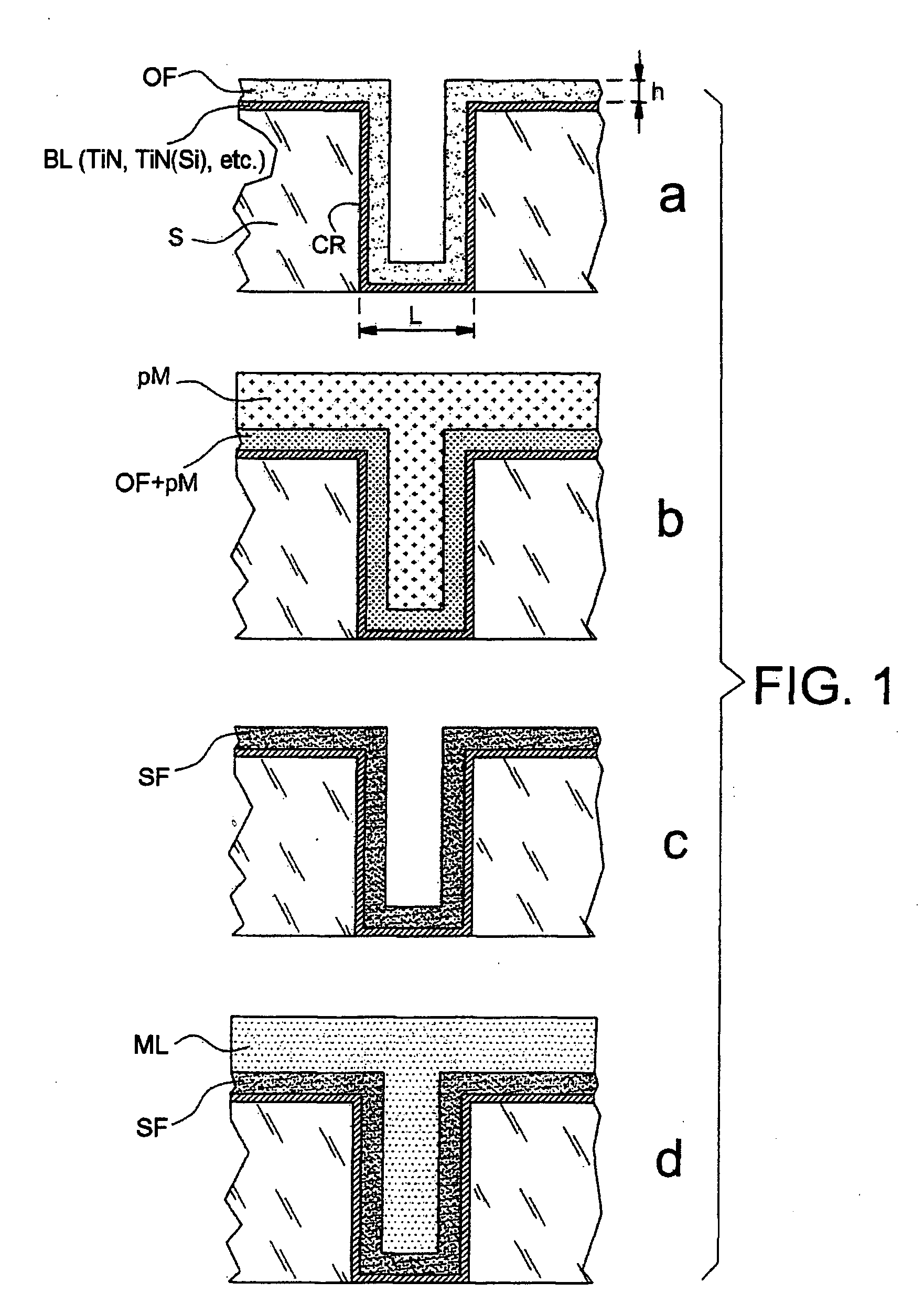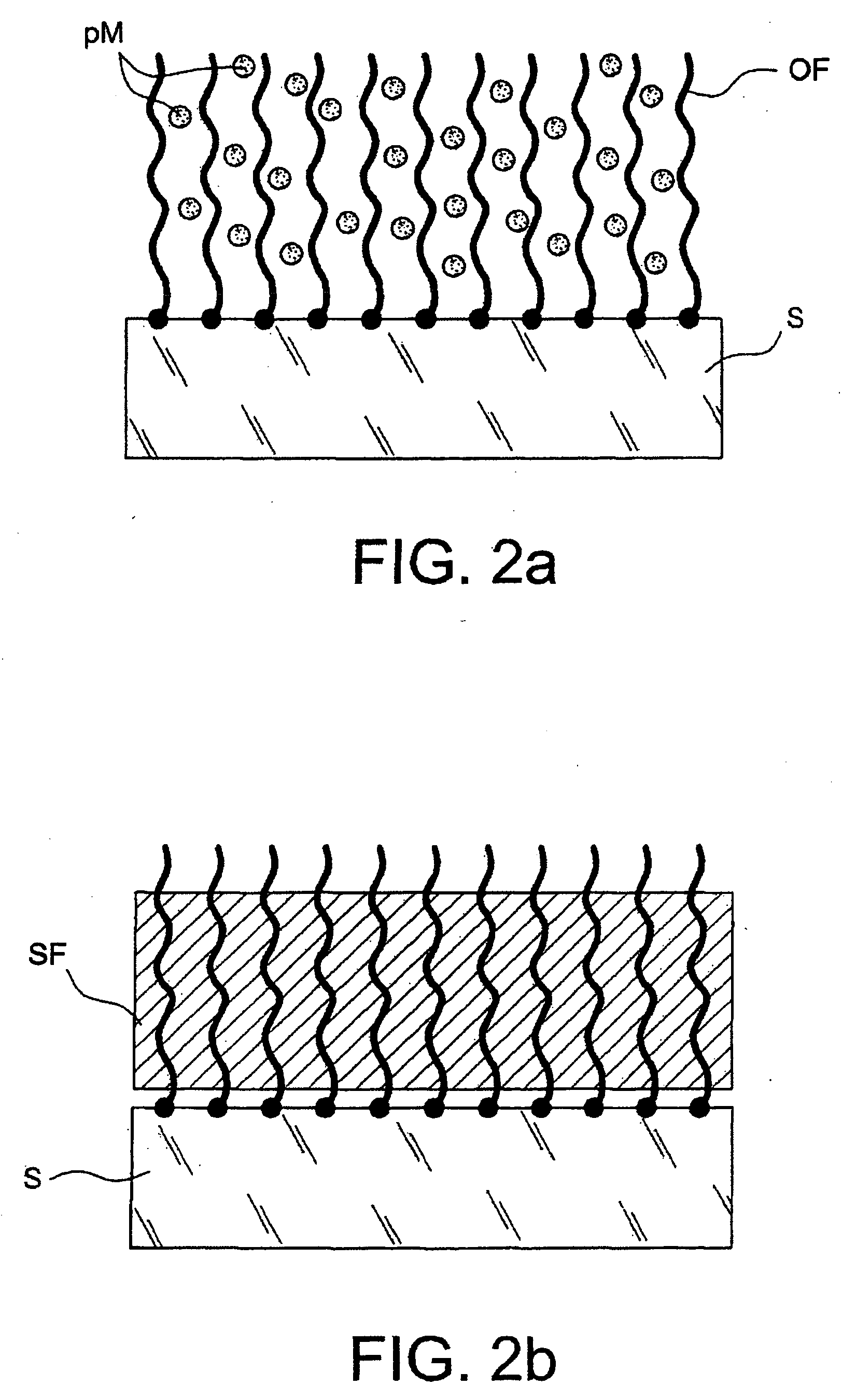Surface-coating method, production of microelectronic interconnections using said method and integrated circuits
a microelectronic and surface coating technology, applied in the direction of coatings, electrical equipment, liquid/solution decomposition chemical coatings, etc., can solve the problems of increasing the pressing of etching and the inability to apply certain processes and devices described below for microelectronics in these fields, and the resistance is increasingly unacceptabl
- Summary
- Abstract
- Description
- Claims
- Application Information
AI Technical Summary
Benefits of technology
Problems solved by technology
Method used
Image
Examples
example 1
Filling of an Ultrathin Film of poly-4-vinylpyridine (P4VP) Electrografted onto Gold with Ionic Precursors
[0134] This example demonstrates that the present invention makes it possible to retain, and make use of, the complexation properties of a poly-4-vinylpyridine (P4VP) film, even when this is very thin—in this case it may have a thickness of around 30 nm.
[0135] This example illustrates, generically, the fact that an ultrathin organic film can be filled with metal precursors in ionic form. It also illustrates the fact that the complexing properties of the film are a good means of overcoming the spontaneous re-expulsion of the precursors out of the film when this film, once it has been filled and despite the unfavourable diffusion gradients, is dipped into a solution containing no precursors.
[0136] Starting with a gold strip—5 μm of gold evaporated by Joule heating onto a glass microscope slide, pretreated with a film of chromium serving as adhesion primer—an electrografted P4VP...
example 2
Electroreduction of Metal Precursors within an Ultrathin Film of poly-4-vinylpyridine (P4VP) Electrografted onto 316L Stainless Steel
[0141] This example illustrates the reduction of precursor ions trapped beforehand in a polymer film electrografted onto a metal surface. A metal film, identifiable by photoelectron spectroscopy, was thus able to be formed within the electrografted film. The reduction was carried out by electrolysis in a solution containing precursor ions. This also illustrates the fact that it is possible to obtain a metal film within an organic film according to one method of implementation in which the trapping of the precursors and the formation of the metal film take place in a single bath.
[0142] A thin P4VP film was formed using the same protocol as that of the above Example 1 on three 316L stainless steel strips (strips (a), (b) and (c)) measuring 1×10 cm, degreased beforehand by ultrasonic treatment in dichloromethane. The strips were rinsed with DMF, dried i...
example 3
Direct Attachment of a Seed Film from an Organic Film of a Polymer Deposited by Spin Coating
[0146] This example illustrates the formation of a metal film from precursors of the metallic material that are trapped in a polymer film simply deposited on a metal surface by spin coating. The polymer was resistant to the dipping bath, which allowed the precursors to be trapped owing to the fact that it was merely swollen by this bath, but not being soluble therein.
[0147] In this example, the organic film was deposited by spin coating using a solution containing 5 wt % of P4VP in DMF, so as to obtain a P4VP coating of about 100 nm on a gold strip similar to that of Example 1. The strip thus treated was dried with a hair dryer and then dipped for 25 minutes into a solution containing 10 g of copper sulphate in 200 ml of deionized water in order to insert the precursor of the metallic material. The strip was then rinsed with deionized water and then immersed in an electrolysis bath containi...
PUM
| Property | Measurement | Unit |
|---|---|---|
| Thickness | aaaaa | aaaaa |
| Thickness | aaaaa | aaaaa |
| Thickness | aaaaa | aaaaa |
Abstract
Description
Claims
Application Information
 Login to View More
Login to View More - R&D
- Intellectual Property
- Life Sciences
- Materials
- Tech Scout
- Unparalleled Data Quality
- Higher Quality Content
- 60% Fewer Hallucinations
Browse by: Latest US Patents, China's latest patents, Technical Efficacy Thesaurus, Application Domain, Technology Topic, Popular Technical Reports.
© 2025 PatSnap. All rights reserved.Legal|Privacy policy|Modern Slavery Act Transparency Statement|Sitemap|About US| Contact US: help@patsnap.com



